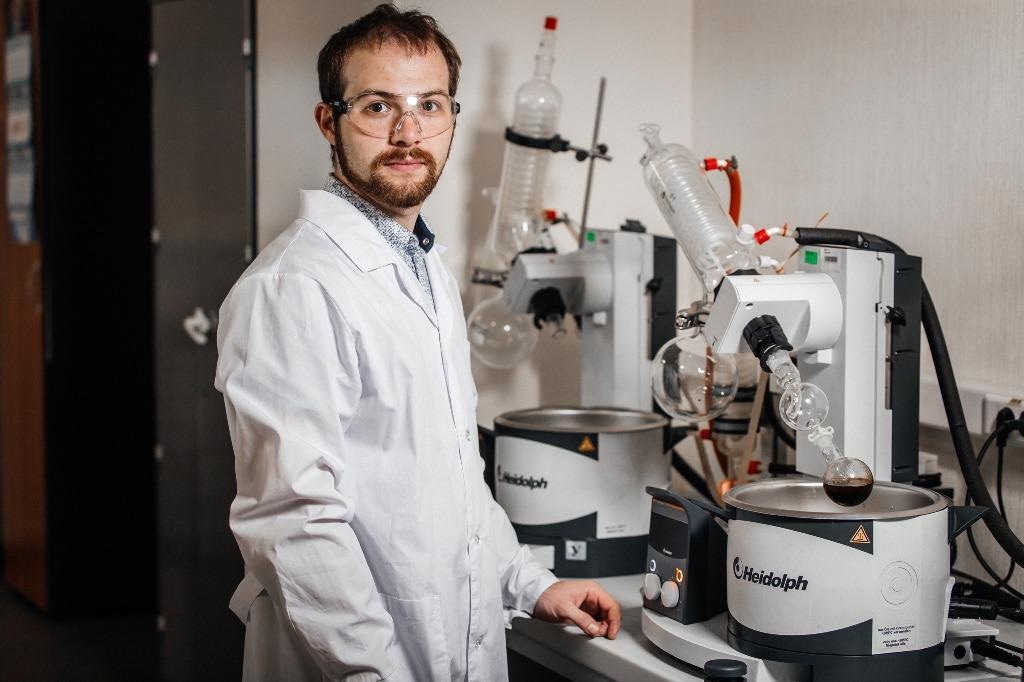Jun 28 2021
Researchers from Tomsk Polytechnic University (TPU) and their collaborators have recently produced a special molecule of verdazyl-nitronyl nitroxide triradical. Only a handful of researchers across the world have succeeded in obtaining molecules that have similar properties.
 Image Credit: Tomsk Polytechnic University.
Image Credit: Tomsk Polytechnic University.
The new molecule can withstand high temperatures and yet remains stable. It also acquires potential magnetic properties. This molecule is a continuation of investigators’ study on the quest for potential organic magnetic materials. The study results were recently published in the Journal of the American Chemical Society.
One of the most promising technologies for storage devices is magnetoresistive random-access memory (MRAM). Today, however, the development of MRAMs is quite limited because a smaller cell cannot be produced due to spontaneous magnetization reversal. Single molecular magnets built on organic compounds do not have this drawback — some molecules can already work as a memory storage unit.
At a certain temperature, a magnetic phase transition occurs, the consistent orientation of the magnetic vectors of molecules is observed, as a result, the matter becomes a united magnet. Thus, 20-40 molecules are quite enough to form a micromagnet. Our task in the research laid in creation such a molecule that could be capable to give its magnetic properties at high temperatures, would be crystalline and would possess a small distance between radical centers.
Pavel Petunin, Study Author and Associate Professor, Research School of Chemistry and Applied Biomedical Sciences, Tomsk Polytechnic University
While producing the molecule, the researchers worked with three radical centers in one molecule and integrated them into a single conjugated structure. A palladium-catalyzed reaction of a verdazyl radical, with a gold complex of a nitronyl-nitroxyl radical, was used to synthesize the molecule.
The presence of unpaired electrons in starting compounds and the combination of three radical centers in a single molecule, which impacts its stability, complicated the course of the reaction. According to the team, no other methods are available to produce the molecule.
The researchers from TPU, the Vorozhtsov Novosibirsk Institute of Organic Chemistry at the Siberian Branch of Russian Academy of Sciences, the Zelinsky Institute of Organic Chemistry of the Russian Academy of Sciences, the Voevodsky Institute of Chemical Kinetics and Combustion of the Siberian Branch of the Russian Academy of Sciences and the International Tomography Center of the Siberian Branch of the Russian Academy of Sciences participated in the synthesis of the new molecule.
The study was performed within the project of the Russian Science Foundation No. 20-73-00236 titled, “Stable Organic Radicals as Promising Building Blocks for New Materials”.
The published research not only makes a significant contribution to the development of stable verdazyl radicals but it is also a meaningful publication for TPU. Research teams of the TPU Research School of Chemistry and Applied Biomedical Sciences perfectly complete the mission, which was determined at the moment of the School creation.
Marina Trusova, Director, Research School of Chemistry and Applied Biomedical Sciences, Tomsk Polytechnic University
Trusova added, “The Journal of the American Chemical Society is the most peer-reviewed chemical journal. Research teams around the globe are intending to publish their articles in this journal. It should be noted that it is a cycle of the research works of the research team. The authors have recently published their research work in the equally top-rated Angewandte Chemie academic journal (IF: 12.959, Q1).”
Presently, the researchers have approached complicated molecules and have planned to produce virtually impossible molecules, such as high-spin dendrimers and heterospin.
Journal Reference:
Tretyakov, E V., et al. (2021) Platform for High-Spin Molecules: A Verdazyl-Nitronyl Nitroxide Triradical with Quartet Ground State. Journal of the American Chemical Society. doi/10.1021/jacs.1c02938.